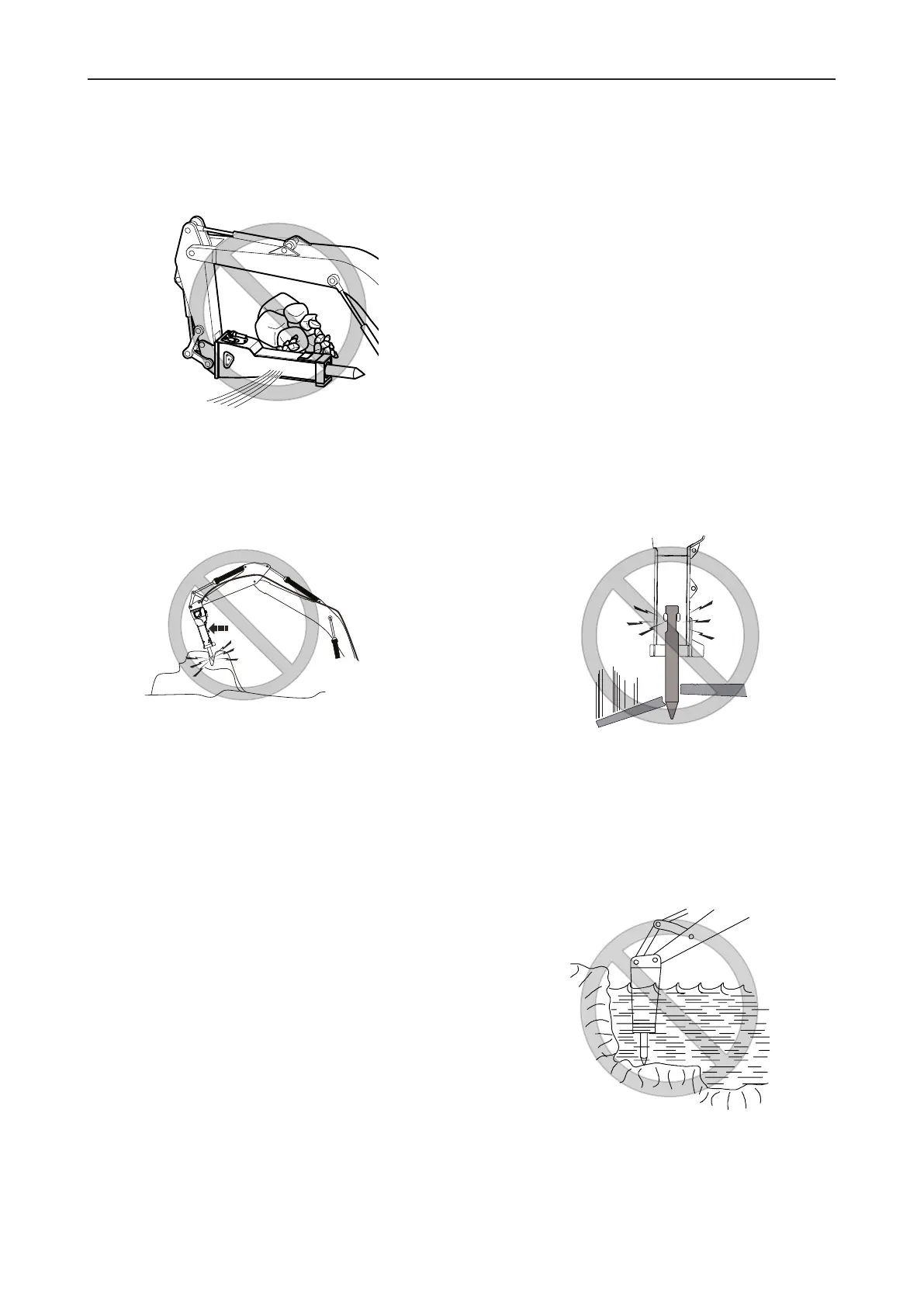Safety and operating instructions
© Construction Tools GmbH | 33905146 01 | 2019-09-05
Original Instructions
37
6.6.3 Moving objects
n
Never use the hydraulic attachment to move debris.
This would damage the hydraulic attachment.
6.6.4 Levering
n
Never use the working tool for crowbar-type applica-
tions.
This might cause the working tool to break. Listen to
the sound of the hydraulic breaker – it changes when
stresses occur between the working tool and the
wear bush.
6.6.5 Blank firing of the working tool
The working tool "blank fires" if the percussion energy is
transferred to the retainer bars instead of to the material
to be broken. This happens when the working tool
breaks through the material or slips off it, e.g.: when
working on thin concrete slabs or layers of loose rocks.
Blank firing of the working tool subjects the hydraulic
breaker and the carrier to increased loads. Blank firing of
the working tool generates a typical metallic sound.
n
Try to avoid blank firing of the working tool by:
–
observing the material to be broken to identify
whether there is any risk of the working tool break-
ing through the material or slipping off it.
–
listening to the sound of the hydraulic breaker.
You can hear a metallic twang when the working
tool is blank firing.
n
Stop the hydraulic breaker when blank firing occurs.
6.6.6 Use under water
n
Never use the hydraulic attachment under water.
This would seriously damage the hydraulic attach-
ment and may damage the whole hydraulic installa-
tion.
